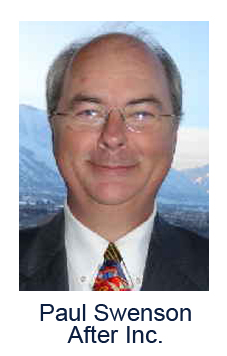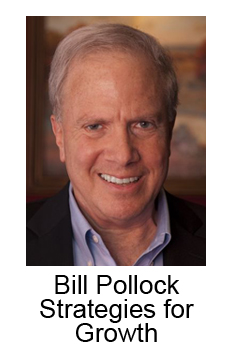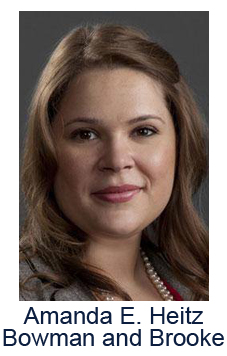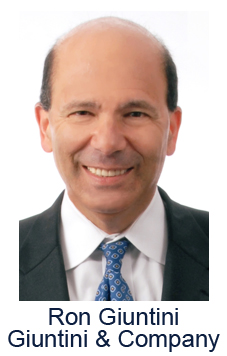February 16, 2017 |

|
ISSN 1550-9214 |
WCM Workshop Schedule:Six half-day classes on topics of interest to warranty professionals and service contract practitioners are scheduled for Tucson in early March, during the day before the beginning of the main conference.In less than three weeks, warranty professionals will gather in Tucson, Arizona, for the 13th annual Warranty Chain Management Conference. And as always, the opening day is taken up by a series of pre-conference workshops. Many times, at past conferences, people arrive too late to attend any of the workshops, but wish they had. So while there's still time for attendees to switch to an earlier flight, we wanted to provide some detail about what's on offer. This year, there will be six workshops -- three in the morning and three in the afternoon on Tuesday, March 7. They'll be followed by a welcome reception in the evening, and then the main conference proceeds on Wednesday and Thursday. What these workshops provide is a deep dive into a single topic, such as avoiding lawsuits or customizing service contracts. They're run by experts in the field, but the attendees are from all levels. And what they all know is the fundamental value of conferences like these: none of this material can be learned from books. Morning WorkshopsThere are three workshops scheduled for 9 AM to 12 noon:
The first one on the list, "Limited Warranty and ESP Program Warranty Analytics: How to Unleash New Profitability and Customer Loyalty," will be presented by three industry executives from After Inc.: Paul Swenson, Executive Vice President of Business Development; Scott Morrison, Executive Vice President of Business Development; and Dan Adelsberg, Group Director, Analytics. After Inc., a longtime sponsor of this newsletter, is a spin-off from a research company called Fulcrum Analytics Inc. It specializes in helping manufacturers, retailers, administrators and underwriters understand the income, expenses, and profitability of their aftermarket sales and extended warranty programs, through the use of warranty analytics and quantitative methods. 
Swenson is one of only a handful of people who have been to all 12 of the WCM Conferences held to date. At most of them, he and the After Inc. team have made well-attended presentations during the main conference, at the workshops, or both. He said they're asked back primarily because the reviews collected from previous attendees have always been very positive. And based upon personal experience, we can confirm that their room is usually quite full until the very end of the workshop. Swenson said he really enjoys this chance to discuss some of the arts and sciences that underpin the product protection industry. "Understanding risk and accurate loss cost analytics are at the very core of limited warranty and service contract management, and ultimately the customer experience. And it's probably the least understood fundamental," he said. So he's very happy to be asked back to explain it to a new group each year. This year, the team added the words "Customer Loyalty" into the workshop's title for a specific reason, Swenson said. "This isn't just about cost management. It's also about the customer experience, and how do you make sure that your forecast cost per unit for a particular liability or term takes into account the type of customer experience that you want to have." It's not just a repair, he said. It's a question of what else you want to do for the customer to keep them coming back? What additional benefits might be offered? And what would they cost? Swenson said a wide range of people have come to the workshop in years past. "We get a lot of different types coming in. We have actuaries who come to it. We have service contract program managers. We have claims administrators, and those who are responsible for managing claims costs. We have a lot of extended service contract managers, because they're trying to come to grips with outsourcing and how they can make improvements to their programs," Swenson explained. "Other times, we have controllers who come in. We have marketing managers, service managers, and so on, all trying to come to grips with how they can do a better job of forecasting losses and claims, and how they can do a better job of claim management." It doesn't require any advanced knowledge of mathematics, he added. This workshop covers both limited warranties and service contracts, Swenson noted. He said they share a lot of the same actuarial and analytical methods, with of course the main difference being that warranties are given away as a benefit of a product purchase while the other is an optional add-on, sold separately. But they also share the same disadvantage, in that product technology and designs are changing so fast that past history is not always a good predictor of future behavior. "So we've developed some specific analytic techniques for the forecasting of frequency and severity that have proven to be highly accurate," he said. Many of After's clients use these techniques to double-check the figures of the insurance underwriters they work with. And some of those insurance companies, rather than using their own methods, have now instead adopted the After techniques, he said. Raising Customer Satisfaction LevelsAnother possibility for the morning timeslot is a workshop entitled, "Transforming Warranty Management Into Improved Customer Satisfaction and Revenue Generation," to be presented by Bill Pollock, President of Strategies for Growth, a consulting firm based in Westtown, PA. 
Pollock, who is also a repeat presenter of WCM workshops, said he's aiming this year's presentation at managers and executives who need to improve customer satisfaction, drive revenues, and gain competitive advantage through improved warranty management. "The perfect attendee would be anyone who deals both internally and externally with customer satisfaction, revenue generation, revenue management, or sales and marketing," he said. "They're the people who have the mandate -- all their merit increases, their bonuses, are going to be dependent on how efficiently they run their part of the warranty management organization." Pollock said companies want to see both a contribution to the bottom line and an improvement in customer satisfaction levels. "But they're almost diametrically opposed to one another," he said. Deny more claims and satisfaction drops. Approve more claims and profits drop. So there has to be another way: increase revenue. "One of the best things you can do to improve your revenue stream and to satisfy customers is to focus on warranty management, contract renewals, and attachment rates," Pollock said. "You're going to have increased revenues, and they're going to be more predictable." Once the revenue increases, the money can be invested in automating and improving processes, which will ultimately raise customer satisfaction levels, Pollock explained. The goal is to turn a warranty claim into a more pleasant encounter for the customer, rather than adding insult on top of the injury. "If you can't make them feel better virtually immediately, then you're going to allow a bad situation to get even worse," he said. "What you need to do is build a warranty management program that can generate increased revenue, then take that revenue and spend it on improving the processes." Pollock said his advice is backed up by surveys he's conducted both recently and in years past. "The first part of the workshop is going to be me presenting what best practices organizations are doing that are different from what the average organization is doing. But we also introduced some new questions into the survey this year," he said, such as whether your organization has recently upgraded its warranty management solution. "What we're finding is that there's a big difference," he said, in metrics such as claims processing time, service profitability, and supplier recovery rates. More basically, Pollock said, the companies that recently upgraded their warranty management solutions are better not only at measuring themselves, but also at reporting the improved metrics. "Now, through more automated processes, through the cloud, powered by the Internet of things, you can build algorithms that allow you to more quickly identify than ever before, what's really making a difference," he said. The third offering of the morning is "Product Pricing and Development 101," to be presented by Trish Myers, a Senior Director at EFG Companies. Founded 40 years ago, EFG provides vehicle service contract administration, training, and compliance services to automotive dealers and manufacturers. Myers is also presenting an afternoon workshop that focuses on product pricing and data analytics. Afternoon WorkshopsAt 2 PM, three more workshops will convene in the Hilton:
The first gives warranty professionals a chance to spend three hours with a defense attorney who wants to keep her clients out of court. The second is a deep dive into the realm of business-to-business service contracts. And the third is another chance to learn about warranty analytics and forecasting methods. "Warranty Claims Handling 101," presented by Amanda Heitz, an Associate Attorney with Bowman and Brooke LLP, is not so much about how to handle claims as it is about how to handle claims in a way that reduces the need for lawsuits. 
"I do a lot of product defense work," she said. "A lot of times, people will claim there's a defect in a product, and that it hurt them, or it caused them some sort of financial loss, and we are hired to represent the manufacturer." She said she would rather that those defects were handled properly as warranty claims, minimizing injuries and losses, and maximizing customer satisfaction. Heitz said she is driving down to Tucson for the day from her firm's office in Phoenix. At last year's WCM Conference, Justin Niznik, a colleague of hers from the Orlando office, made a similar drive to Jacksonville, Florida, to present an identically-titled WCM workshop that also focused on warranty and the law. But like he said last year, it's not for lawyers. It's for claims handlers who want to avoid lawyers. What she's doing, in essence, is showing potential clients how to eliminate the need to hire a product defense attorney like her in the future, by improving the way that warranty claims are handled from the outset. If she does a good job, she will effectively be reducing her future income. But she predicted that there won't be any reduction in the number of plaintiffs any time soon, because in some states they can make the defendant pay their attorney fees if they prevail. "This can be a very complex area of law, and there can be a lot of traps for the unwary. And there's an entire cottage industry that's grown up that specializes in suing manufacturers for breach of warranty," she said. Closing Legal LoopholesOne thing those plaintiff's attorneys seem to love, she said, is a poorly-written repair order. "Sometimes these repair orders don't do a good job of explaining what's really going on, and they create loopholes that cause problems later on." For instance, most manufacturers ask the repair technicians to write down whatever the customer tells them is the problem. But they don't ask the technician to also write down whether or not they agree. And they don't write down whether the problem is a defect, or whether it's completely normal. So a customer can later claim that the technician couldn't fix the defect described in the repair order, when there was never anything wrong to begin with. "It's good to have some information in the hands of the people responsible for doing this warranty work, of how they can best protect themselves," Heitz said. "I see my presentation helping people stay out of my office. I would rather have my clients happy with how things are being managed, rather than us dealing with poorly-written repair orders, or not handling a customer situation correctly, or writing something inappropriate in an email." Heitz said she asked some of her clients to make a list of some of the things that drive them nuts. "I work hand-in-hand with in-house counsel, or their paralegals, and they see all these statements from the customer service representatives on the phone, or from the dealerships." So she and they are very familiar with what not to do. But she also plans to pass on some best practices tips about what they should do, what they should say, and what they should write down. "We're going to do an intro to the law," she said, and what not to do. Some of the basics, such as an overview of the Magnuson–Moss Warranty Act and some aspects of the various state-level lemon laws, will be included. But it will be done at an introductory level, hence the "101" in the title. Heitz said she also plans to go over what information claims handlers would need to give to an outside counsel such as herself, if things do someday end up in court. That can get very expensive, very quickly. "At the end of the day, it isn't just about replacing a $5,000 transmission. If we have to fight about it, this becomes a $100,000 problem. And it's not just my fees. It's having to pay the other person's fees." Commercial Extended WarrantiesAnother possibility for the afternoon is a workshop entitled, "Service Revenue Maximization: Key Strategies for Increasing Extended Warranty Attachment and Renewal Rates," which will be presented by Ron Giuntini, President of Giuntini & Company Inc. 
Giuntini said he was originally scheduled to co-present the workshop with Michael Blumberg, President of the Blumberg Advisory Group Inc. But Blumberg can't make it to Tucson, so Giuntini said he will do it alone. The pair just finished a major survey on the subject of commercial extended warranties, Giuntini said. They had over 200 responses, and a presentation of the results will take up the first half of the workshop, he said. Everybody who attends gets a copy of the results. The central topic of the survey, and the premise for this workshop, is to look at how the manufacturers of business-to-business products, such as trucks, telecom equipment, aerospace, construction, and industrial automation systems, can sell more extended warranties and entice customers to keep renewing them. The secret, he said, is to allow the contracts to be highly customized to fit the client's situation. "We came up with over a dozen different ways people are dealing with it," Giuntini said. For instance, one manufacturer found that some customers weren't renewing their service contracts because they wanted only parts, since they had their own repair technicians. And they said repairs under warranty took longer than if their own staff had done the work, resulting in more downtime. What they wanted was a parts-only service contract. In the aerospace industry, he said, jet engine extended warranties are called "power by the hour," which provide both preventative maintenance and repair services to keep the unit in service as constantly as possible. The phrase was coined by Rolls-Royce Holdings, but it's spread across the industry as airlines praised the value of these kinds of programs. "Performance is much more demanding in the commercial sector," Giuntini said. Downtime is the biggest problem, not the cost of repairs. So extended warranties in the commercial sector have to specify response times, and sometimes they're specified in hours, not days. Not Like Retail"Sometimes, we're talking about multi-millions of dollars worth of machinery, where you have hundreds of thousands of dollars of contracts," he said. Sometimes the manufacturer's repair technicians are stationed on-site, so they can respond immediately. "It's not like the retail business." Giuntini said one of the biggest challenges manufacturers have with commercial extended warranties is trying to predict the risk based on a small number of units, and then pricing the service contracts appropriately. "Especially when they're introducing a new product that may be a little leading edge," he said, they're likely to be wrong about the loss cost -- either too high or too low. "You just don't have the numbers to distribute the risk over a large population." Meanwhile, customers also know the risk of being pioneers, so they will insist on coverage. But if it's priced too high, that sends a signal that even the manufacturer is uncertain about product reliability. So it might be appropriate for a manufacturer to sell the contracts at a loss, as part of the cost of a new product introduction. Another suggestion is for commercial product manufacturers to increase renewal rates by gradually dropping the price of service contracts from one year to the next. "It shows that I want to work with you," he said. The survey asked specific questions about who in the organization actually configures and prices the extended warranties, Giuntini said. "Every company is a little different." It also asked questions about whether most of the extended warranties had standard terms and conditions, or if they could be customized. "But then we asked them where they wanted to head, in regard to increasing your sales. And a plurality were to increase customized offerings," he added. | ||||||||||||||||||||||||||||||||||||||||||||||||||||||||||||||||||||||||||||||||||||||||||||||||||||||||||||||||||||||||
| ||||||||||||||||||||||||||||||||||||||||||||||||||||||||||||||||||||||||||||||||||||||||||||||||||||||||||||||||||||||||








